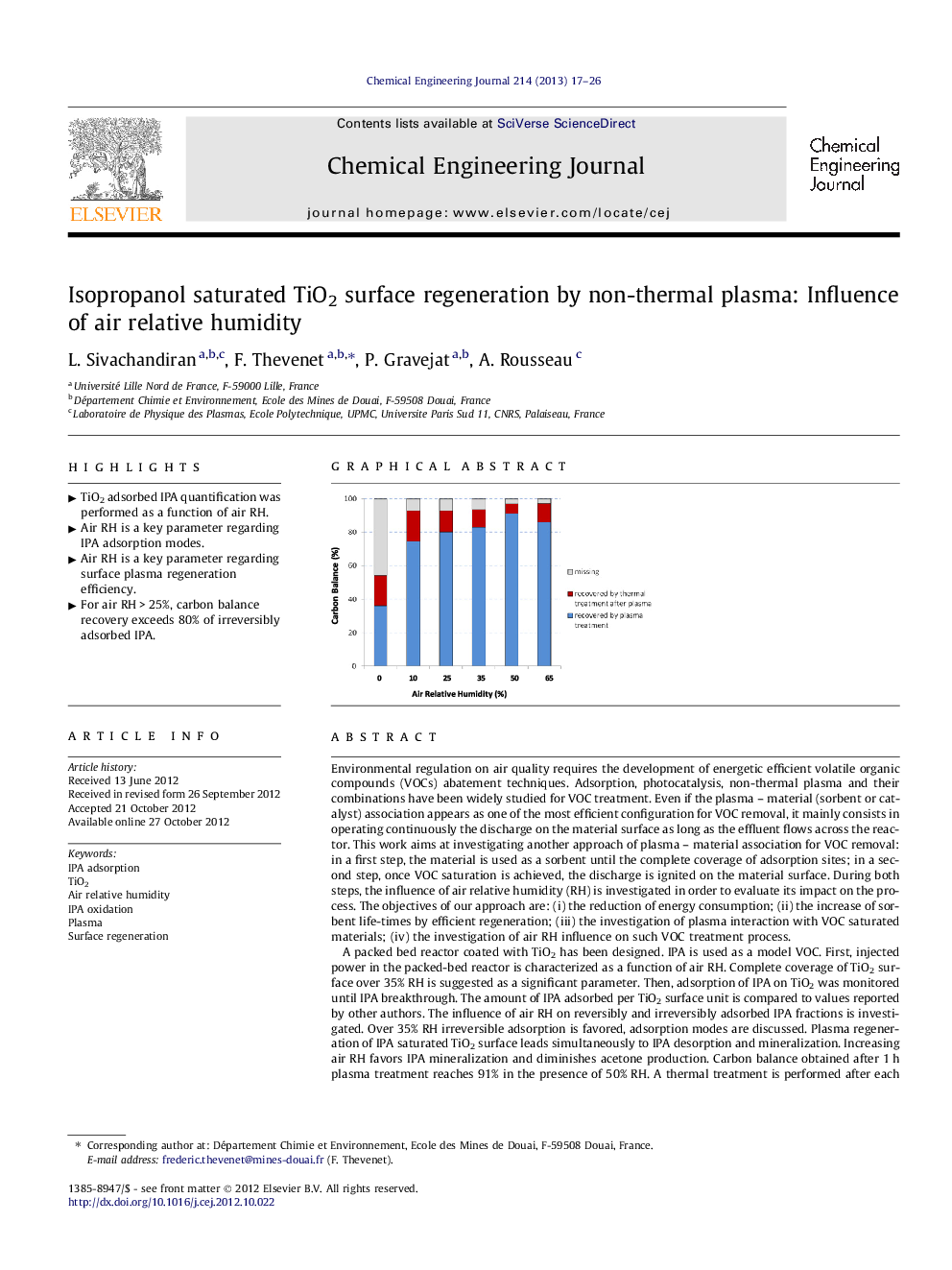| کد مقاله | کد نشریه | سال انتشار | مقاله انگلیسی | نسخه تمام متن |
|---|---|---|---|---|
| 149034 | 456426 | 2013 | 10 صفحه PDF | دانلود رایگان |

Environmental regulation on air quality requires the development of energetic efficient volatile organic compounds (VOCs) abatement techniques. Adsorption, photocatalysis, non-thermal plasma and their combinations have been widely studied for VOC treatment. Even if the plasma – material (sorbent or catalyst) association appears as one of the most efficient configuration for VOC removal, it mainly consists in operating continuously the discharge on the material surface as long as the effluent flows across the reactor. This work aims at investigating another approach of plasma – material association for VOC removal: in a first step, the material is used as a sorbent until the complete coverage of adsorption sites; in a second step, once VOC saturation is achieved, the discharge is ignited on the material surface. During both steps, the influence of air relative humidity (RH) is investigated in order to evaluate its impact on the process. The objectives of our approach are: (i) the reduction of energy consumption; (ii) the increase of sorbent life-times by efficient regeneration; (iii) the investigation of plasma interaction with VOC saturated materials; (iv) the investigation of air RH influence on such VOC treatment process.A packed bed reactor coated with TiO2 has been designed. IPA is used as a model VOC. First, injected power in the packed-bed reactor is characterized as a function of air RH. Complete coverage of TiO2 surface over 35% RH is suggested as a significant parameter. Then, adsorption of IPA on TiO2 was monitored until IPA breakthrough. The amount of IPA adsorbed per TiO2 surface unit is compared to values reported by other authors. The influence of air RH on reversibly and irreversibly adsorbed IPA fractions is investigated. Over 35% RH irreversible adsorption is favored, adsorption modes are discussed. Plasma regeneration of IPA saturated TiO2 surface leads simultaneously to IPA desorption and mineralization. Increasing air RH favors IPA mineralization and diminishes acetone production. Carbon balance obtained after 1 h plasma treatment reaches 91% in the presence of 50% RH. A thermal treatment is performed after each plasma treatment in order to evidence plasma insensitive adsorbed species and to restore TiO2 initial surface state. 97% of the carbon balance is collected under 50% RH after thermal treatment. During the thermal step, acetone and CO2 are mainly produced, their formation pathways are discussed.
Figure optionsDownload as PowerPoint slideHighlights
► TiO2 adsorbed IPA quantification was performed as a function of air RH.
► Air RH is a key parameter regarding IPA adsorption modes.
► Air RH is a key parameter regarding surface plasma regeneration efficiency.
► For air RH > 25%, carbon balance recovery exceeds 80% of irreversibly adsorbed IPA.
Journal: Chemical Engineering Journal - Volume 214, 1 January 2013, Pages 17–26